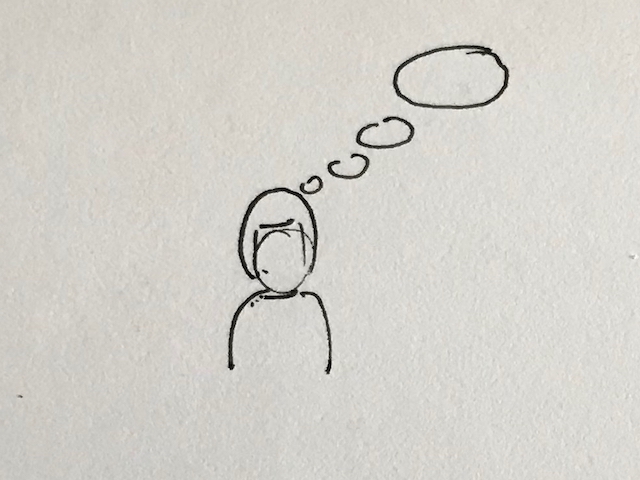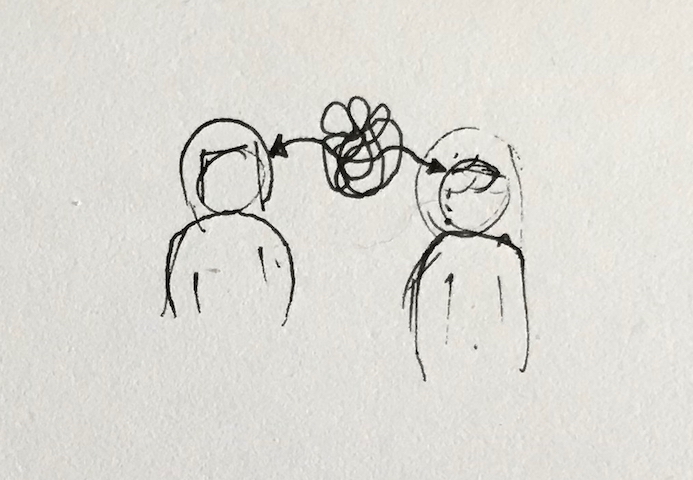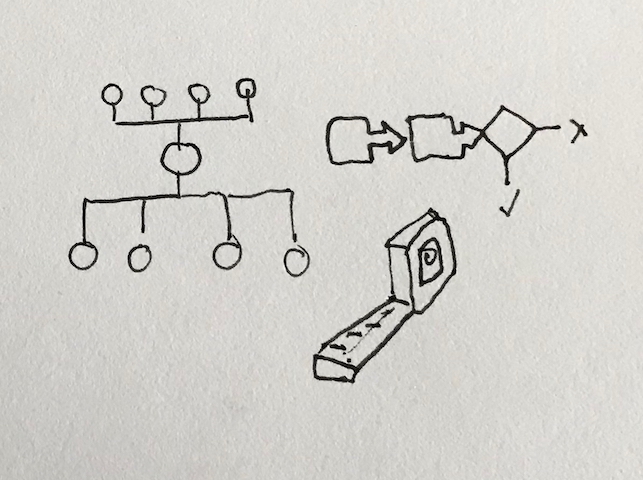I am starting to shift my attention away from creative tools for engineers. Tools are still important. But I’ve realised that you need a creative culture for individual creativity to thrive.
Recently, I rediscovered in Laloux’s ‘Reinventing Organisations‘ the Wilbur four-quadrant model. The model describes how culture, systems and worldviews interact. We can use this model to understand a phenomena in an organisations from four different perspectives:
- How the phenomenon can be measured from the outside
- How the phenomenon feels from the inside – intuiting how it feels
- How the phenomenon appears to the individual
- How the phenomenon appears to a group of people.
Like all engineer-friendly models, Wilbur’s is a two-by-two grid. The columns divide the grid into interior perspecitve and exterior perspective. The rows divide the grid into individual and collective perspective. According to Laloux
Wilbur’s insight, applied to organisations, means we should look at: 1) people’s mindsets and beliefs [individual interior perspective]; 2) people’s behaviour [indvidiual exterior perspective]; 3) organisational culture [collective interior perspective]; and, 4) organisational systems (structures, processes and practices) [collective exterior perspective]”
From Reinventing Organisations, Laloux (2016)
Applying the four quadrant model to organisational creativity
I’ve assembled some quick thoughts on how the four quadrant model might apply to understanding creativity in an organisation. I have written the statements for a fictional, ideal case. This difference between this ideal case and reality can give us some suggestions for what we might need to do to build a more creative organisation.
Personal beliefs and mindsets

- My creative thinking is valuable to my work
- My colleagues value my creative thinking
- I work on projects that are meaningful
- I can share my ideas without fear of criticism
- When I share my ideas I am feeding the creativity of the organisation
- Other people value my input in their creative work.
- It is helpful for me to share creative challenges with colleagues
- I am able to create the conditions I need to work creatively
Behaviour

- People listen to each other
- People share information and ideas with each other
- People give and receive feedback constructively
- People are open and honest with one another
- People look outside the organisation to diversify creative inputs
- People keep each other up-to-date on their creative work
- People make time for divergent thinking
Organisational structures, process and practices

- Time-tracking supports rather than stifles creative thinking
- We involve people with a wide range of backgrounds and perspective in our work
- Organisational aims align with project aims
- Project processes include creative steps
- People have freedom over how they work
- People share project work with one another
- We choose work space and tools to promote interaction between people and engagement with their work
- Those with power support and champion creative processes.
Organisational culture

- We tell stories of our creative successes
- Our creative work can be seen everywhere in the office
- People know us for our creative thinking
- People know us for being open and willing to collaborate
- Our branding reflects our creativity
Defining the culture that we want
Of the four lists that I wrote above, writing the last one on organisational culture was the hardest. According to Wilbur’s model, organisational culture is something that is internally perceived by a group of people. Perhaps then I shouldn’t be surprised that it is difficult to define.
A tool that I find helpful for describing organisational culture is the Cultural Web (Johnson and Scholes, 1992). I’ll write more about that in a separate post. But let us say for the moment the organisational creative culture that we would like to achieve is the one described by my list. How can we go about achieving it?
Influencing creative culture
Laloux goes on to explain how the Wilbur Four Quadrant model reveals three avenues we can follow:
Put in place supporting structures, practices and processes. Ensure people with moral authority in the company role-model the behaviour associated with the culture. Invite people to explore how their personal belief system supports or undermines the new culture.
From Reinventing Organisations, Laloux (2016)
Using Laloux’s example as a template, I will attempt my own illustration of how this could apply to creating culture of sharing creative work.
We could start by putting in place a series of recurring practices that encourage sharing of work. For example there could be a weekly pin-up of working sketches where people tour each other’s workstations to see what they have been working on. Another idea could be to hold regular idea scrapheap sessions, where people bring and swap discarded ideas from one project that others may be able to use in other contexts. By running these sessions regularly the culture of creating and sharing ideas will emerge – after a while this way of working will just become something people do.
At the same time we could ask the senior engineers in the organisation to make a point of regularly sharing their creative thinking on projects and asking other people about their creative work.
Finally we can run focus groups with groups of staff to explore how they relate to sharing creative thinking with others. There could be all sorts of reasons why people are nervous or uncomfortable about sharing their ideas (this factor also emerges as part of Csikzentmihalyi’s creative systems model). As Laloux suggests, ‘coaching could help uncover limiting beliefs’.
Conclusions
Creative culture is not something that can be manipulated directly, but we can reach it through the prosthetics of personal beliefs, group behaviours and organisational systems and processes.
Defining that culture is something we can do using a tool like the Culture Web (see my next post). How easy it is to change is likely to depend on the type or organisation we are dealing with – but that’s a conversation for another day.
Further reading
- 9 ways to build creativity in your organisation – is a post I wrote to explore the application of Csikszentmihalyi’s Creative Systems Model.
- How to have ideas – guidance for engineers and other humans – this is the post I send people when they ask what it is I do.
- The Happy Grid – another post that involves a two-by-two grid. It’s all about using happiness to prioritise your to do list.


Soren Willert
Hi there, Oliver – I liked reading your blog. I went on with the Happy Grid blog. I liked that too. I didn’t do my own happy grid as a paper-and-pencil exercise, but just in my head. Generally speaking, my work gives me a lot of excitement, sometimes pleasurable excitement, sometimes irritation and despait – but that’s somehow exciting too, and most often things turn out allright in the end. All’s well that ends well, as good old William Shaking Spear said. I do believe task 4s (from the grid) take up pleasantly small space in my worklife. I believe this is so because i’ve been good at making positive use of the relative freedom academic institutions offer their employees. I also believe that you – knowing me as much and as little as you – will concur with this belief of mine.
Now, my most important reason for commenting on your blog is your way of using Laloux as theoretical platform. Have I told you about the the project Rethinking Organizations in which I’m engaged here in my Danish surroundings. The project is now in third year, and thus moving towards it closure. It involves a temporary network of (roughly) ten organizations whose shared endeavour is to minimize hierarchy and push themselves towards optimal degrees of purpose-guided self-organizing. As member of the project staff I’m engaged in transforming our project-based experiences into a book format. But in Danish language.
But let’s carry on this conversation in English 🙂 .